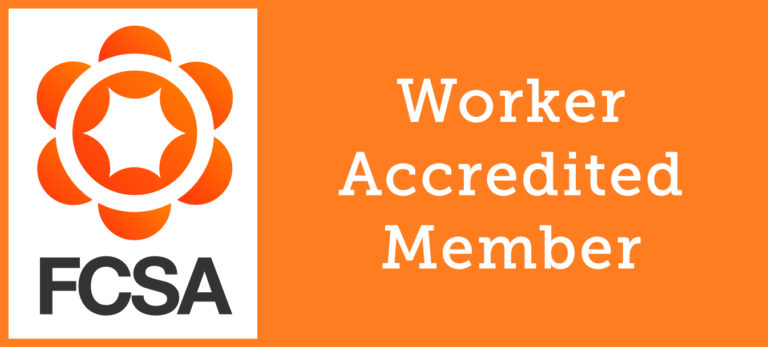
With IR35 reforms officially confirmed for April 2021, this spring will see the responsibility for determining employment status transferred to employers rather than contractors or temporary workers themselves. The updated legislation will permanently change the ways of working between private sector companies and their recruitment agencies, with additional collaboration and administrative procedures required to avoid non-compliance penalties on both sides.
Here Generate’s expert payroll and contractor services specialists reveal their insights into accurately determining IR35 status in preparation for the law changes in April.
What is CEST?
The Check Employment Status for Tax (often abbreviated to CEST) tool was developed by the UK Government in 2017. When the off-payroll rules were introduced to the British public sector that year, the HMRC tool was designed to help public organisations assess whether each one of their workers fell inside or outside of the new legislation.
HMRC have directed business leaders and their recruiters towards the CEST tool ahead of the new IR35 reforms for the private sector – however, the tool’s limitations mean private sector recruitment agencies should not rely solely on CEST to determine off-payroll status.
5 Limitations of CEST
1. Lack of Accuracy
Whilst the tool has yet to be tested by the majority of private sector businesses and their staff, the Government have received complaints regarding accuracy of results from public sector employers in the past few years. HMRC states that the tool has an 85% accuracy rating on average, meaning that 15% of cases may deliver an incorrect or inconclusive assessment.
Results from recent IR35 tribunals suggest that the Government identified flaws in the tool before launching it (which do not yet appear to have been resolved) and point to the tool being so confusing that HMRC itself cannot understand it – which doesn’t bode well for business leaders and recruiters who are new to IR35.
2. Failure to Address Employment Law Status
The CEST tool only looks at employment status from a tax perspective, not from an employment law perspective. Whilst an individual worker who is employed or self-employed for tax law purposes will often also be classed as employed or self-employed for employment law purposes, this will not necessarily be true in all circumstances. Self-employed workers and their end clients may put every effort into using the CEST tool, but be wrongly reassured that they do not need to undergo any further assessment.
Relying on CEST also runs the risk that workers will be referred to the HMRC tool to specifically determine their employment law status, but be frustrated and confused at the lack of an answer. Recruiters and employers will still need to understand the employment status of their contractors, freelancers and sole traders, which the CEST tool is unable to help with. As employment status has major impacts on the rights of each individual in the workplace and the exact liabilities and obligations of an employer, recruiters will need to work closely with their clients to understand their own responsibilities and the situation of each candidate they place.
3. Omission of Key Factors in Determining IR35 Status
Despite being a vital factor in determining whether a worker is inside or outside of IR35, Mutuality of Obligation (MOO) is completely absent from CEST questions. HMRC stated it believed MOO to be present in all public sector engagements, and maintains this position despite recent tribunal cases which stated otherwise.
In a case brought and won against HMRC by Armitage Technical Design Services Ltd, Judge Rupert Jones commented, ‘HMRC’s case is that where one party agrees to work for the other in return for payment, then this satisfies mutuality of obligation between the two parties. That would be true of every contract, both employment and for services, otherwise the contract would not exist at all.
‘The mere offer and acceptance of a piece of work do not amount to mutuality of obligation in the context of employment status.’
4. Largely Untried and Untested
After its initial release in 2017, Contractor Calculator reported the following year that the CEST tool had been untested and largely unchecked by the Government. The Cabinet Office revealed in June 2018 that before its launch, HMRC and Government Digital Services (GDS) agreed that CEST did not require a formal service assessment, meaning the tool has not been assessed by and therefore likely does not meet GDS standards.
Although the past few years have enabled further scrutiny of the tool by public sector organisations and legal officials, the widespread use of CEST has yielded few learnings or useful guidance for the new IR35 reforms. In recent years four tribunals have been brought between individual workers and the Government based on a disagreement over CEST tool determinations. The Government lost three of four tribunals, evidencing the fallibility of CEST and the lack of knowledge of HMRC officials who supported the incorrect CEST assessments all the way through to court.
With huge variations in contract and work types, the private sector is likely to face more complex challenges in determining off-payroll status than the public sector has seen so far. The lack of light shed on the practical use of CEST to determine off-payroll status, and the scarcity of real-life examples to aid employers, mean recruiters must look further afield when supporting their clients and candidates with the IR35 changes.
5. Lack of Detail
An HMRC inspector will usually ask between 50 and 100 questions of a contractor or freelancer when conducting an IR35 enquiry. In contrast, the CEST tool asks a maximum of 16 questions to determine IR35 status, and can even return a status confirmation based on just four questions. Some lawyers have criticized the tool for over-simplifying a complex piece of tax legislation and lulling contractors and their employers into false reassurance, only to find themselves facing non-compliance claims down the line.
The lack of official guidelines for use of the tool by companies and individuals who are largely unfamiliar with tax law – and HMRC’s statement that it will ‘stand by’ the results of the tool nevertheless – mean CEST will continue to confuse individuals, recruiters and organisations.
How Can Recruitment Agencies Help Their Clients Through IR35?
The Government’s CEST tool is just the beginning of determining the correct off-payroll status for all a client’s contractors, freelancers and self-employed workers. Given the inaccuracies, lack of detail and insufficient guidelines, recruiters must support their clients by developing a robust solution that involves IR35 specialists and seasoned payroll providers.
Rather than relying on the automated CEST tool, a true partnership with contractor services and payroll providers will involve working with skilled human specialists who can listen to, understand and advise on your individual circumstances.
Generate have a wealth of experience in supporting recruiters and their candidates with IR35 reforms. We work with over 6,000 contractors in 90 countries around the world – get in touch to find out how we could help you.











